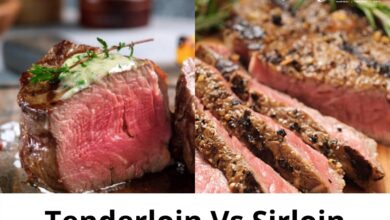Food Presentation Ideas – 8 Main Important
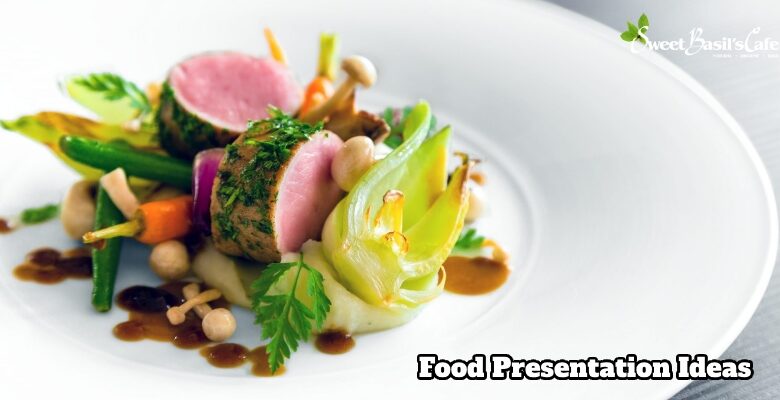
Food presentation ideas are not simply a final step before the dish is brought to the table. Let’s explore creative and colorful ideas for food presentation in this article.
What are food presentation ideas?
“Food presentation ideas” refers to creative and innovative ways of arranging, styling, and decorating food dishes to enhance their visual appeal. Food presentation is not only about making the dish look attractive but also about creating an experience for the diner that engages multiple senses, including sight, smell, and sometimes even touch.

It involves considerations such as the arrangement of food components on the plate, the use of colors, textures, and garnishes, as well as the choice of serving dishes and tableware. Effective food presentation can elevate the dining experience, making the food more appealing and enticing to eat.
Popular food presentation ideas
Popular food presentation ideas encompass a wide range of styles and techniques, often influenced by culinary trends, cultural preferences, and personal creativity. Here are some popular food presentation ideas:
Plating Techniques
Minimalist Plating: Arranging food in a simple yet elegant manner with clean lines and negative space.
Stack and Layer: Building height and dimension by stacking food elements vertically or layering them horizontally.
Deconstructed: Presenting components of a dish separately but artistically arranged on the plate.
Swirls and Sauces: Using sauces or purees to create decorative swirls or patterns on the plate.
Color and Contrast
Colorful Ingredients: Incorporating vibrant fruits, vegetables, and herbs to add visual interest and contrast.
Contrasting Textures: Pairing crispy elements with creamy or soft textures to create a pleasing contrast in mouthfeel.
Color Blocking: Arranging food items in blocks or sections of complementary colors for a visually striking presentation.
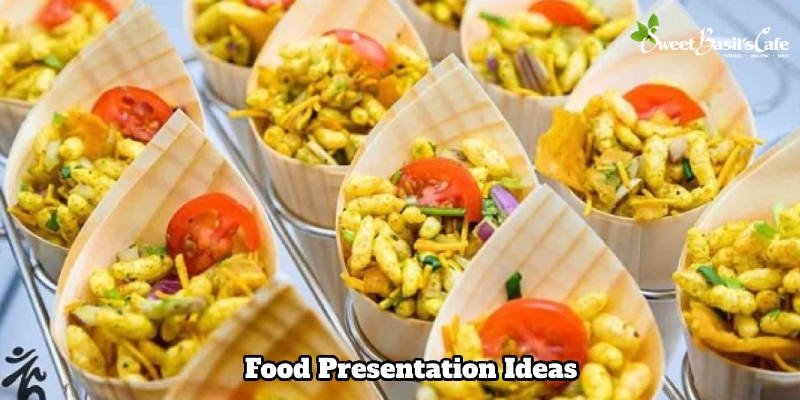
Garnishes and Decorations
Edible Flowers and Herbs: Adding fresh flowers or delicate herbs as garnishes to enhance the aesthetic appeal.
Microgreens and Sprouts: Sprinkling small greens over dishes for a pop of color and added freshness.
Citrus Zest and Gratings: Using citrus zest, grated cheese, or nuts to garnish dishes and provide flavor accents.
Creative Serving Vessels
Slate Boards and Wooden Planks: Serving individual or shared dishes on rustic-style boards for a trendy presentation.
Mason Jars and Glassware: Layering ingredients in transparent jars or glasses to showcase colors and textures.
Hollowed-Out Fruits or Vegetables: Using hollowed-out shells of fruits or vegetables as serving vessels for salads, dips, or desserts.
Themed and Seasonal Presentations
Holiday Themes: Decorating dishes with seasonal motifs or colors to celebrate holidays and special occasions.
Cultural Inspirations: Drawing inspiration from different cultures to create themed presentations that reflect specific cuisines.
Seasonal Ingredients: Highlighting seasonal produce and flavors in dishes to showcase freshness and regional availability.
Interactive and DIY Presentations
Build-Your-Own Stations: Setting up stations where diners can customize their dishes with a variety of toppings, sauces, and garnishes.
Tableside Preparations: Offering dishes that are finished or prepared tableside for added theatrics and interactivity.
DIY Dessert Bars: Providing a selection of desserts and toppings for guests to create their own sweet treats.
New trends in food presentation
Natural and Organic Elements
There’s a growing emphasis on incorporating natural and organic elements into food presentation, such as using wooden boards, slate plates, or stone surfaces to serve dishes. This trend aligns with the increasing demand for sustainable and eco-friendly practices in the culinary industry.
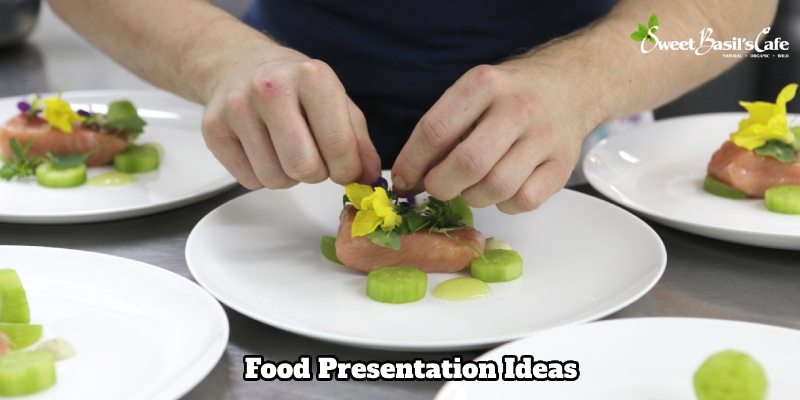
Artistic and Abstract Presentations
Chefs are experimenting with more artistic and abstract presentations, using avant-garde techniques to create visually stunning dishes. This may involve sculpting food into intricate shapes, painting sauces onto plates, or using molecular gastronomy to deconstruct and reimagine classic dishes in unconventional ways.
Interactive Experiences
Food presentation is becoming more interactive, with chefs incorporating elements of surprise and playfulness into the dining experience. This could include dishes that change color or texture when interacted with, or incorporating elements of technology such as augmented reality or projection mapping to enhance presentation.
Minimalism and Simplicity
While elaborate presentations still have their place, there’s also a trend towards minimalism and simplicity in food presentation. Chefs are focusing on highlighting the natural beauty and flavors of ingredients, opting for clean and understated plating techniques that allow the food to speak for itself.
Global Influences
With increased globalization, chefs are drawing inspiration from a diverse range of culinary traditions and cultures when it comes to food presentation. This could involve incorporating traditional techniques or ingredients from different regions around the world to create unique and innovative presentations.
Storytelling Through Food
Food presentation is increasingly being used as a means of storytelling, with chefs creating narratives around the origin, preparation, or cultural significance of dishes. This could involve incorporating elements of storytelling into the presentation itself, such as using props or visual cues to convey a story or theme.
Texture and Contrast
Texture and contrast play a key role in contemporary food presentation, with chefs paying close attention to the interplay of different textures and flavors on the plate. This could involve combining crunchy and creamy elements, or balancing sweet and savory flavors to create a harmonious and dynamic eating experience.
Seasonal and Local Focus
There’s a growing emphasis on seasonal and locally sourced ingredients in food presentation, with chefs designing dishes that highlight the flavors and produce of the current season. This could involve incorporating seasonal fruits and vegetables, or featuring locally sourced proteins and artisanal products in the presentation.
The importance of food presentation in cuisine
The importance of food presentation in cuisine cannot be overstated, as it plays a crucial role in enhancing the dining experience in several ways:
Visual Appeal
Food that is presented aesthetically is more visually appealing and enticing to diners. The saying “we eat with our eyes first” holds true, as the sight of a beautifully plated dish can stimulate appetite and anticipation, setting the stage for an enjoyable meal.
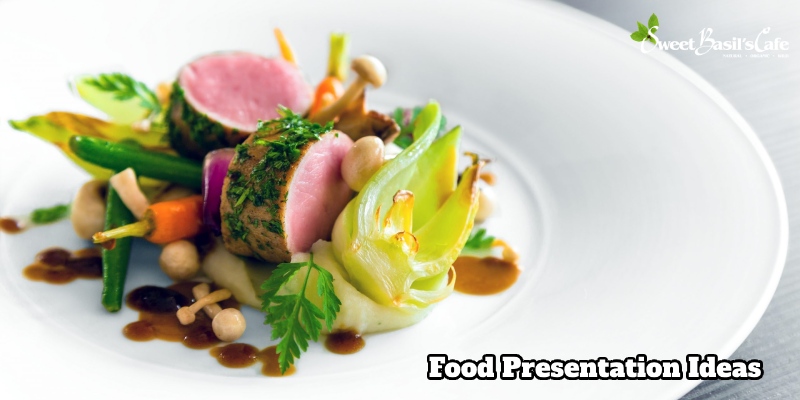
Perception of Quality
Well-presented food conveys a sense of quality and craftsmanship. Carefully arranged plates suggest attention to detail and skillful preparation, which can positively influence diners’ perceptions of the restaurant or chef.
Enhanced Flavor Perception
The way food is presented can impact how its flavors are perceived. Thoughtfully arranged dishes can highlight the various components and flavors, helping diners appreciate the complexity and depth of the dish.
Memorable Dining Experience
Memorable dining experiences often involve not just delicious food but also engaging presentation. Unique and creative presentations can leave a lasting impression on diners, making the meal more memorable and shareable.
Cultural and Artistic Expression
Food presentation is an opportunity for chefs to express their creativity and artistic vision. Plating techniques, garnishes, and decorative elements can reflect cultural traditions, culinary trends, and personal style, adding depth and richness to the dining experience.
Differentiation and Branding
In a competitive culinary landscape, food presentation can be a means of differentiation and branding for restaurants and chefs. Distinctive and innovative presentations can help establishments stand out and attract diners seeking novel and Instagram-worthy dining experiences.
Balanced Eating Experience
Beyond aesthetics, food presentation also influences the eating experience in terms of texture, temperature, and portion control. Thoughtfully plated dishes take into account these factors to ensure a balanced and harmonious eating experience for diners.
Customer Satisfaction and Loyalty
Ultimately, food presentation contributes to overall customer satisfaction and loyalty. When diners are delighted by both the taste and presentation of their meals, they are more likely to return to the restaurant, recommend it to others, and become loyal patrons.
In conclusion
Food presentation ideas are a creative art and reflect the soul of the chef. Let your imagination and creativity run wild, making every meal a unique and unforgettable work of art.

